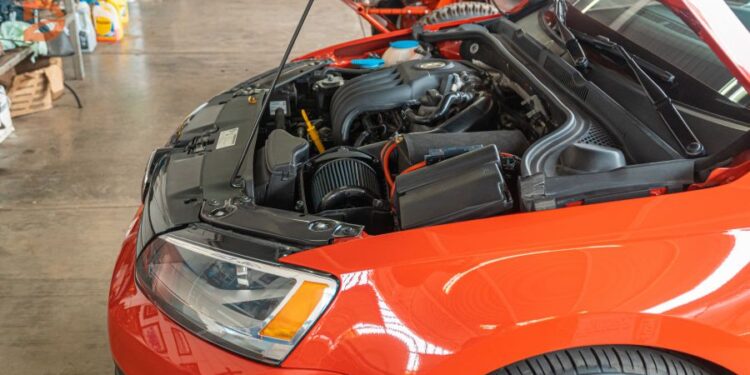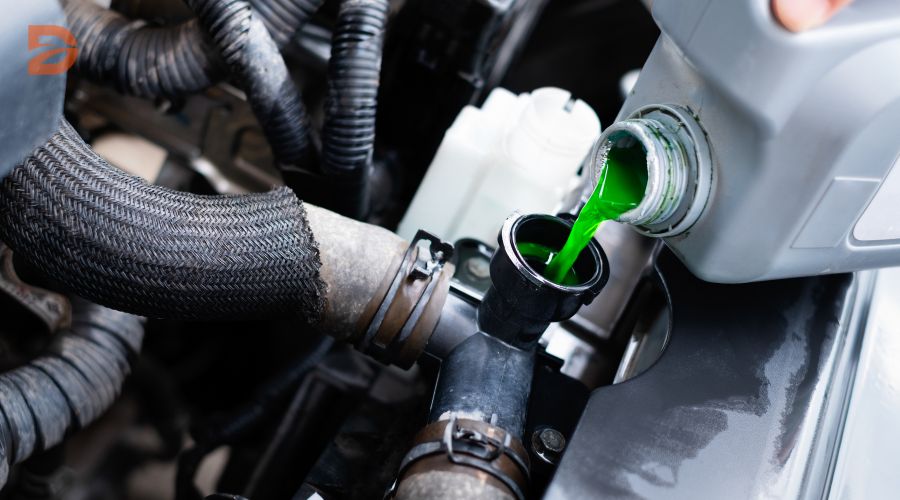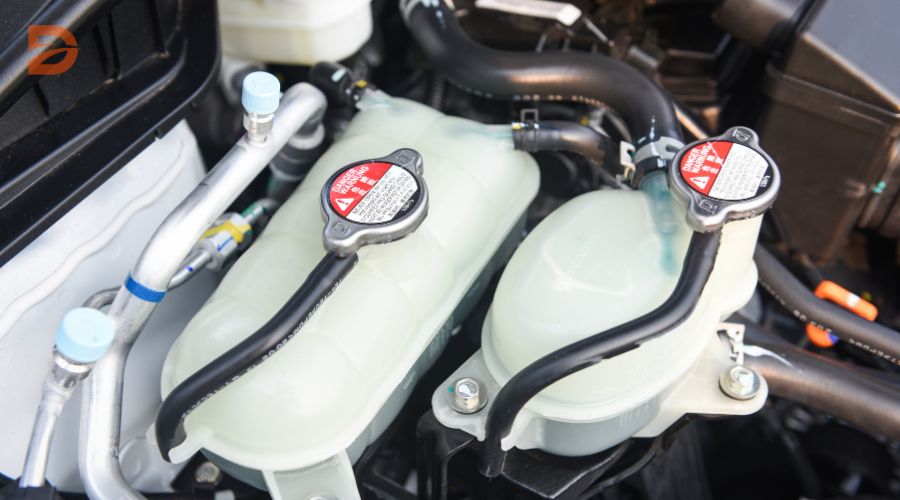Have you ever wondered how crucial your vehicle’s cooling system is to its overall performance and longevity? Coolant flush kits are the unsung heroes in maintaining the health of your engine, but do you know just how essential they are? In this article, we’ll dive deep into the importance of regularly flushing your radiator and replacing the coolant to ensure your car stays cool, even in the toughest conditions.
Key Takeaways:
- Coolant flush kits are essential tools for maintaining the health of your vehicle’s engine cooling system.
- Regular flushing of the radiator and replacement of the coolant can prevent overheating, reduce the risk of costly repairs, and extend the life of your engine.
- Coolant flush kits provide a convenient and effective way to flush the cooling system and ensure your vehicle runs smoothly and efficiently.
- Flushing the radiator helps maintain the integrity of the hoses and ensures the longevity of the water pump.
- A proper mix of antifreeze and water is crucial for optimal cooling performance.
Understanding the Importance of Engine Cooling Systems
The engine in a vehicle is the powerhouse that propels it forward, but this process generates a significant amount of heat. Engine cooling systems play a crucial role in managing this intense heat, preventing damage to the internal combustion engine, and ensuring its efficient operation.
The Invention of the Cooling System
The early inventors of the internal combustion engine quickly recognized the need for a cooling system to prevent overheating. They devised a system that circulated water around the heated engine parts, absorbing the heat and radiating it into the air through a front-mounted radiator. Later, they discovered that a coolant mixture of water and ethylene glycol (antifreeze) was more effective, as it had a higher boiling point and lower freezing point, allowing it to remain fluid over a wider temperature range.
Today, engine cooling systems are essential components of modern vehicles. They work tirelessly to maintain the engine’s optimal operating temperature, typically around 115 degrees Fahrenheit. This is achieved through a complex network of components, including the water pump, radiator, cooling fans, thermostat, and various hoses and belts.
| Component | Function |
|---|---|
| Water Pump | Circulates the coolant throughout the engine and cooling system. |
| Radiator | Exchanges the heat from the hot coolant with the ambient air, cooling the fluid. |
| Cooling Fans | Draw air through the radiator to improve heat dissipation. |
| Thermostat | Regulates the flow of coolant into the engine to maintain optimal operating temperature. |
| Belts | Essential for driving the water pump to circulate coolant effectively. |
The proper functioning of these engine cooling system components is crucial for the longevity and performance of the internal combustion engine. Regular maintenance, including flushing the cooling system and replacing worn parts, is essential to keep your vehicle running smoothly and efficiently.
Why Coolant Flush Kits are Essential for Maintaining Your Vehicle
Maintaining the health of your vehicle’s cooling system is crucial for its longevity and optimal performance. Over time, the coolant in your engine can become contaminated with dirt, rust, and other debris, which can lead to clogged radiators and reduced heat dissipation. This is where coolant flush kits come into play – they are an essential tool for keeping your engine cool and protected.
Regular coolant flushes, typically recommended every 3-5 years or 100,000 miles, help remove these harmful substances from the cooling system. By doing so, you can prevent long-term damage to your engine and ensure that the cooling system continues to function efficiently. This not only helps maintain your vehicle’s performance but also protects the engine from overheating, which can lead to costly repairs.
Coolant flush kits often include a range of products, such as radiator flush solutions and distilled water, to thoroughly cleanse the system. Using these kits is a simple and effective way to keep your vehicle’s cooling system in top shape, extending its lifespan and ensuring your engine is protected from the damaging effects of contaminated coolant.
| Recommended Coolant Replacement Intervals | Coolant Type |
|---|---|
| Every 3-5 years | Old green coolant |
| Up to 5 years or more | New long-life coolants |
| Every 8-10 years or every other coolant change | Hoses |
By using a coolant flush kit, you can ensure that your vehicle’s cooling system is operating at its best, protecting your engine from the damaging effects of contaminated coolant and helping to maintain its overall performance and longevity.
Signs That Your Cooling System Needs a Flush
Maintaining a healthy cooling system is crucial for your vehicle’s performance and longevity. While the recommended frequency for a radiator flush varies, experts generally suggest doing it every 30,000 miles or as per the manufacturer’s schedule. However, there are several telltale signs that your cooling system may need immediate attention.
Overheating and Clogged Radiators
One of the most obvious signs that your cooling system requires a flush is overheating. This can be caused by a loss of coolant due to leaks or the coolant failing to effectively remove heat from the engine. Another common issue is a clogged radiator, which prevents the efficient transfer of heat, leading to overheating.
- Visible signs of debris, rust, or corrosion in the cooling system indicate the need for a flush.
- Unusual noises, such as grinding or gurgling, can also be a sign of a problem with the cooling system.
- Coolant leaks, often identified by their distinct color, are another indicator that your radiator needs attention.
Neglecting to flush your cooling system can lead to more serious issues, such as premature wear on the water pump, radiator, heater core, and hoses. By addressing these problems early on, you can prevent expensive engine damage and ensure your vehicle continues to run smoothly.
| Recommended Maintenance | Frequency |
|---|---|
| Radiator Flush | Every 30,000 miles or per manufacturer’s schedule |
| Coolant Replacement | Every 30,000 miles or per manufacturer’s schedule |
| Water Pump Replacement | Every 60,000-100,000 miles |
Coolant flush kits, engine cooling
Maintaining the health of your vehicle’s cooling system is crucial for its longevity and optimal performance. Coolant flush kits provide a convenient and effective solution for this task, offering a comprehensive approach to flushing and refilling the radiator and engine cooling system.
These specialized kits typically include a backflow preventer coupler, a splash deflector tube, a flush-and-fill tee, and hose clamps, allowing you to easily and efficiently flush the radiator and replace the coolant. The primary benefit of using a flush kit is the ability to continuously flush the system using a garden hose, rather than having to repeatedly fill and drain the radiator.
- Coolant flush kits contain cleaning agents and additives to remove tough organic deposits and provide outstanding protection for all metals in the cooling system.
- The kits often include a cooling system cleaner and a specialized coolant additive, meeting industry standards for synthetic used coolant.
- Flushing the cooling system with a kit can help extend the lifespan of critical components like the radiator, water pump, and thermostat, ensuring your engine runs at optimal temperature.
While professional coolant flush services can be convenient, using a comprehensive flush kit can be a more cost-effective and empowering solution for vehicle owners. By taking the time to properly flush and maintain your cooling system, you can ensure your engine continues to run smoothly and efficiently for years to come.
Step-by-Step Guide to Flushing Your Radiator with a Flush Kit
Maintaining your vehicle’s cooling system is crucial for protecting your engine from damage caused by overheating. One of the most effective ways to keep your cooling system in top shape is by flushing your radiator with a radiator flush kit. This straightforward process can be completed in just a few simple steps.
First, ensure the engine is cool before starting. Locate the radiator drain plug and drain the old coolant into a drain pan. Next, cut the heater hose and insert the ends into a flush-and-fill tee, securing them with hose clamps. Attach the backflow preventer coupler to the radiator neck and connect a garden hose.
- Start the engine and turn on the water to begin flushing the system.
- Continue flushing until the water runs clear, indicating the system is free of debris and buildup.
- Drain the system and refill it with a 50/50 mixture of water and high-quality antifreeze.
- Let the engine run to circulate the new coolant throughout the system.
By following these simple steps, you can effectively flush your radiator and maintain your vehicle’s cooling system. Regular radiator maintenance is essential for engine protection and ensuring your car’s optimal performance.
Conclusion
Coolant flush kits are an essential tool for maintaining the health and efficiency of your vehicle’s engine cooling system. By regularly flushing the radiator and replacing the coolant, you can prevent overheating, extend the life of your engine, and avoid costly repairs down the road. Whether you choose to use a flush kit or have the service performed by a professional, ensuring your cooling system is well-maintained is critical for keeping your engine running at its best.
Regular radiator maintenance is recommended every 50,000 to 100,000 miles, depending on the type of antifreeze used. Symptoms like debris on the radiator, engine overheating, and coolant leaks indicate the need for a cooling system flush. The process typically involves draining the old coolant, using a radiator cleaner, refilling with the correct antifreeze, and bleeding the system if necessary.
Numerous automotive companies offer efficient cooling system flush and fill equipment to make the maintenance process more convenient and effective. By investing in your engine’s cooling health, you can ensure optimal performance and avoid costly future repairs, protecting your investment in the long run.
FAQ
What are coolant flush kits and why are they important?
Coolant flush kits are essential tools for maintaining the health of your vehicle’s engine cooling system. By regularly flushing the radiator and replacing the coolant, you can prevent overheating, reduce the risk of costly repairs, and extend the life of your engine.
How do engine cooling systems work?
Engine cooling systems are critical components of modern vehicles, responsible for dissipating the intense heat generated by the internal combustion process. The early inventors of the internal combustion engine quickly realized the need for a cooling system to prevent engine damage from overheating. They devised a system that circulated water around the heated engine parts, absorbing the heat and radiating it into the air through a front-mounted radiator.
Why is it important to regularly flush the cooling system?
Over time, the coolant can become contaminated with dirt, rust, and other debris, which can clog the radiator and hinder the system’s ability to effectively dissipate heat. A regular coolant flush using a flush kit helps to remove these contaminants, restoring the system’s efficiency and preventing costly damage to the engine and other components.
What are the signs that my cooling system needs a flush?
The most obvious sign is overheating, which can be caused by a loss of coolant due to a leak or the coolant failing to do its job effectively. A clogged radiator is another serious issue that can lead to overheating, as the buildup of contaminants prevents the radiator from efficiently removing heat from the circulating coolant. Any visible signs of debris, rust, or corrosion in the cooling system are also indications that a flush is necessary.
What do coolant flush kits include and how do they work?
Coolant flush kits provide a convenient and effective solution for maintaining your vehicle’s cooling system. These kits typically include a backflow preventer coupler, a splash deflector tube, a flush-and-fill tee, and hose clamps, allowing you to easily flush the radiator and replace the coolant. The main advantage of using a flush kit is the ability to continuously flush the system using a garden hose, rather than having to repeatedly fill and drain the radiator.
How do I flush my radiator using a coolant flush kit?
Flushing your radiator with a flush kit is a straightforward process that can be completed in just a few steps. First, make sure the engine is cool, then locate the radiator drain plug and drain the old coolant. Next, cut the heater hose and insert the ends into the flush-and-fill tee, securing them with hose clamps. Attach the backflow preventer coupler to the radiator neck and connect a garden hose. Start the engine, turn on the water, and flush the system until the water runs clear. Drain the system, refill it with a 50/50 mixture of water and antifreeze, and let the engine run to circulate the new coolant.











